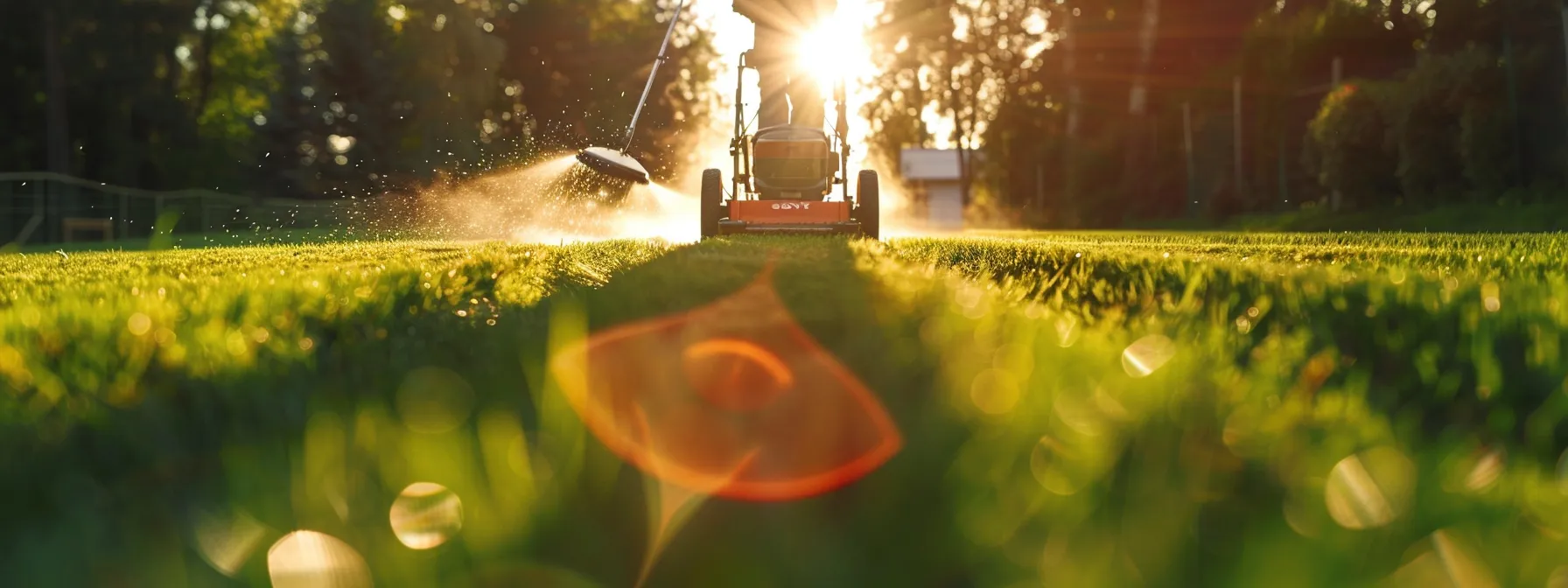Maintaining a lush and healthy lawn often prompts the question: How can proper lawn mowing practices significantly impact my garden’s growth? In this post, readers will learn about key practices such as selecting the right mower, setting the ideal mowing height, and establishing an effective mowing schedule. Understanding these principles can lead to better seed development, improved leaf quality, and enhanced weed control. This article addresses common frustrations like uneven grass growth or mower inefficiency, offering practical solutions to ensure a thriving garden.
Key Takeaways
- Proper lawn mowing promotes healthy grass growth and resilience against pests
- Mowing at the correct height encourages deep root development and soil health
- Regular maintenance of mower blades ensures clean cuts and reduces grass stress
- Recognizing seasonal changes helps in determining the optimal mowing frequency
- Effective grass clipping management supports nutrient recycling and improves overall lawn health
Understanding the Importance of Proper Lawn Mowing
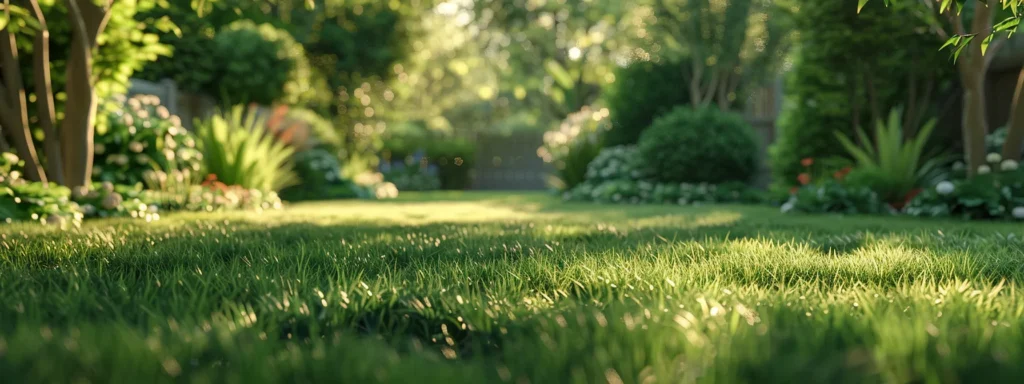
Understanding the Importance of Proper Lawn Mowing
Proper lawn mowing significantly influences grass health by promoting vigorous growth and resilience. It also plays a crucial role in weed prevention, reducing the need for herbicides. Additionally, effective mowing techniques enhance soil and root development, which is essential for a thriving garden. With the right mower and care, a beautiful garden can be achieved through correct practices.
How Mowing Influences Grass Health
Proper lawn mowing has a direct impact on grass health by promoting optimal growth. When grass is cut at the appropriate height, it encourages deep root development and improves soil health, which can enhance nutrient uptake from fertilizers. In contrast, mowing too short can lead to stressed grass that is more susceptible to pests, fungus, and weeds, compromising the overall health of the lawn and surrounding shrubs.
| Mowing Practices | Impact on Grass Health | Recommended Height |
|---|---|---|
| Regular Mowing | Promotes even growth and strengthens roots | 3-4 inches |
| Avoiding Short Cuts | Reduces stress on grass and prevents fungus | Leave grass taller after mowing |
| Sharpening Blades | Prevents tearing, resulting in a healthier lawn | N/A |
The Role of Mowing in Weed Prevention
Proper mowing techniques play a critical role in weed prevention by minimizing lawn stress and promoting healthy grass growth. When a lawn is mowed to the correct height, typically around three inches, grass can outcompete weeds for sunlight and nutrients, reducing their ability to thrive. Moreover, using well-maintained mowers, including those with sharp blades and efficient spark plugs, ensures clean cuts that aid in the decomposition of clippings, further enriching the soil and supporting robust grass development.
- Mow at the correct height to prevent weed struggles.
- Maintain mower blades for clean cuts.
- Monitor lawn stress levels to ensure healthy growth.
Enhancing Soil and Root Development Through Mowing
Proper lawn mowing not only maintains the aesthetic appeal of a garden but also enhances soil and root development. When sod is cut at the correct height, it allows for better moisture retention and encourages deeper root germination, leading to a healthier lawn. Consistent mowing practices help prevent ruts in the soil, ensuring that grass can thrive and absorb essential nutrients efficiently, thereby supporting robust lawn care.
Achieving a Beautiful Garden With Correct Mowing Practices
Achieving a beautiful garden relies heavily on correct mowing practices that focus on maintaining healthy grass blades. Regularly mowing at the ideal height helps to minimize debris on the lawn, which can contribute to a cleaner and more attractive yard. Furthermore, ensuring that the mower blade is sharp not only promotes cleaner cuts but also aids the grass in recovering quickly, especially during periods of drought; this ultimately enhances the lawn‘s resilience and aesthetic appeal.
A well-mowed lawn demands the right tools. Choosing the right mower can make all the difference in achieving that perfect cut.
Choosing the Right Mower for Your Garden
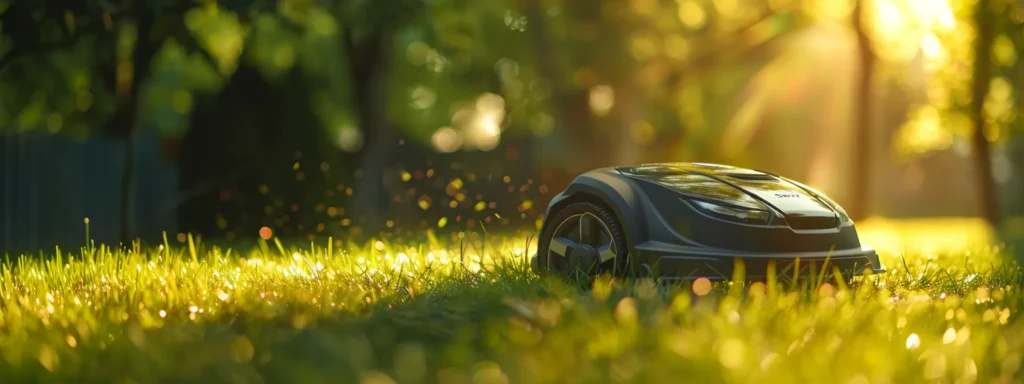
Choosing the Right Mower for Your Garden
Selecting the right mower is crucial for maintaining a thriving garden. This section will compare different types of lawn mowers, helping to identify the most suitable option for specific yard sizes and grass types. It will also discuss selecting the ideal mower blade, which can significantly impact grass health and disease resistance. Additionally, eco-friendly mowing options will be explored, focusing on sustainable practices that reduce environmental wear. Lastly, finding the best mower within your budget ensures effective maintenance during the growing season, enabling gardeners to tackle pests and improve overall lawn aesthetics.
Comparing Different Types of Lawn Mowers
When choosing the right mower for a garden, it is essential to consider different types that cater to various landscape sizes and grass species. For smaller yards, reel mowers can provide an efficient option, while for larger areas, gas or electric models offer greater power and efficiency. A well-chosen mower enhances lawn care by ensuring optimal cutting height, ultimately improving nutrient absorption and contributing to effective pest control.
| Type of Mower | Best For | Benefits |
|---|---|---|
| Reel Mower | Small Yards | Quiet, low maintenance, good for exercise |
| Electric Mower | Medium Yards | Eco-friendly, quieter, easy to use |
| Gas Mower | Larger Lawns | Powerful, handles tough terrain |
| Robot Mower | Automated Maintenance | Time-saving, programmable, precise cutting |
Selecting the Ideal Mower Blade
Selecting the ideal mower blade is essential for maintaining a healthy garden and ensuring efficient lawn care. A sharp blade can create clean cuts, which are crucial for minimizing stress on grass and promoting soil health by reducing soil compaction. Properly maintained blades support better irrigation practices and allow grass seedlings to thrive, ultimately leading to a robust garden that can benefit from compost applications and overall nutrient absorption.
Considering Eco-Friendly Mowing Options
Considering eco-friendly mowing options is essential for maintaining a sustainable garden. Electric lawn mowers, for example, reduce carbon emissions and save on fuel costs while providing the capability to achieve a precise cutting height, which is vital for grass health. Landscapers often recommend these mowers because they not only benefit the environment but also enhance soil health and promote a vibrant garden.
Finding the Best Mower Within Your Budget
Finding the best mower within a budget requires a careful evaluation of options that align with specific lawn care needs. It’s essential to consider factors such as lawn size, grass type, and preferred features, such as self-propulsion or battery life for electric models. By prioritizing durability and functionality, homeowners can invest in a mower that not only meets their financial constraints but also supports efficient mowing practices, ensuring a vibrant and healthy garden.
Now that the right mower sits ready in your shed, it’s time to consider how tall to cut the grass. The right height makes a difference, shaping both the health of your lawn and its beauty.
Setting the Ideal Mowing Height for Your Grass
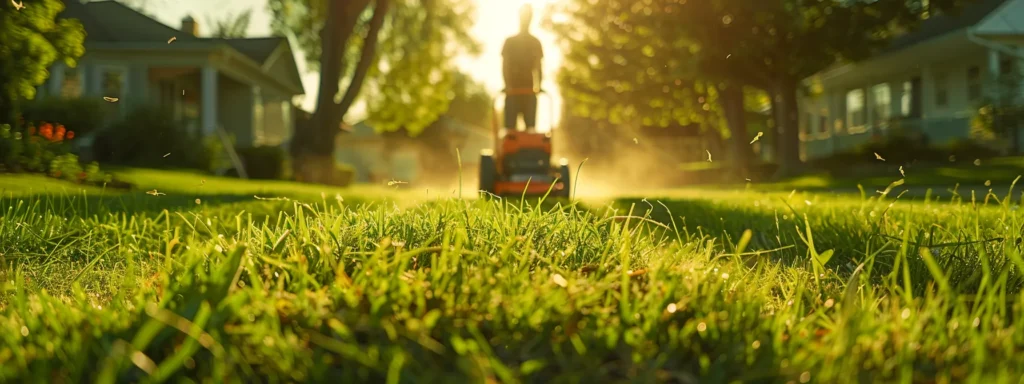
Setting the ideal mowing height is crucial for maintaining a healthy garden. It includes understanding the recommended heights for various grass species, adjusting mower settings for optimal cutting, and applying the one-third rule in mowing. Additionally, avoiding the pitfalls of cutting grass too short ensures that lawns remain resilient and vibrant, fostering robust growth and preventing stress.
Recommended Heights for Various Grass Species
Understanding the recommended mowing heights for various grass species is essential for ensuring a thriving garden. For cool-season grasses like Kentucky Bluegrass, maintaining a height between 2.5 to 4 inches promotes deep root growth and resilience against drought. In contrast, warm-season grasses such as Bermudagrass should be kept at 1.5 to 3 inches, allowing them to flourish in the sun while minimizing the risk of pests and diseases. By adhering to these guidelines, homeowners can optimize lawn health and enhance overall garden aesthetics.
Adjusting Mower Settings for Optimal Cutting
Adjusting mower settings for optimal cutting is fundamental to achieving the ideal mowing height for different grass species. Homeowners should familiarize themselves with the specific height requirements for their grass type and adjust the mower blades accordingly. For example, setting the mower to the correct height according to the species ensures healthier grass growth, minimizes lawn stress, and enhances the overall appearance of the garden:
- Identify the recommended height for your grass type.
- Adjust mower settings based on the lawn‘s needs.
- Monitor grass health regularly to make necessary adjustments.
Applying the One-Third Rule in Mowing
Applying the one-third rule in mowing is essential for maintaining a healthy lawn. This rule suggests that no more than one-third of the grass height should be removed in a single mowing session. By following this guideline, homeowners can promote strong root growth and reduce stress on the grass, allowing it to recover effectively and remain resilient against weeds and pests.
Avoiding the Pitfalls of Cutting Grass Too Short
Avoiding the pitfalls of cutting grass too short is essential for maintaining a healthy lawn. When grass is trimmed more than one-third of its height, it can lead to stress, making it more susceptible to pests, diseases, and drought. Homeowners should monitor their mowing practices closely and adhere to recommended heights for different grass types to ensure robust growth and a thriving garden:
| Grass Type | Recommended Height | Impact of Cutting Too Short |
|---|---|---|
| Kentucky Bluegrass | 2.5 to 4 inches | Increased vulnerability to drought and pests |
| Bermudagrass | 1.5 to 3 inches | Reduced resilience and potential for disease |
The right height sets the stage for healthy grass, but timing is key. A solid mowing schedule will keep your lawn thriving and looking its best.
Establishing an Effective Mowing Schedule

Establishing an effective mowing schedule is vital for maintaining a vibrant garden. This involves determining how often to mow based on grass growth rates, adapting frequency to seasonal changes, and recognizing lawn indicators that signal the need for mowing. Additionally, considering weather conditions plays a crucial role in optimizing mowing practices for the best results.
Determining How Often to Mow Your Lawn
Determining how often to mow a lawn is essential for maintaining its health and appearance. Factors such as grass type, growth rate, and seasonal changes influence the mowing frequency. For instance, during the peak growth seasons of spring and early summer, homeowners may need to mow weekly to prevent overgrowth, while in the fall, mowing can often be reduced to every two weeks as growth slows.
- Consider grass type and its growth rate.
- Adjust mowing frequency based on seasonal conditions.
- Monitor the lawn‘s health to determine the right schedule.
Adapting Mowing Frequency to Seasonal Changes
Adapting mowing frequency to seasonal changes is essential for ensuring a healthy lawn. During the spring and early summer, grass typically grows more rapidly, requiring weekly mowing to maintain an even and tidy appearance. As temperatures drop in the fall, growth slows, allowing homeowners to adjust their mowing schedule to every two weeks. Regularly assessing lawn health and growth patterns helps in determining the optimal frequency for mowing throughout the seasons:
| Season | Mowing Frequency | Notes |
|---|---|---|
| Spring | Weekly | Grass grows quickly; maintain height for optimal health. |
| Summer | Weekly | Adjust based on rainfall and temperature; monitor stress levels. |
| Fall | Every two weeks | Growth slows; preparation for winter begins. |
| Winter | As needed | Focus on snow removal and winter lawn care. |
Recognizing Signs That Your Lawn Needs Mowing
Recognizing signs that a lawn needs mowing is vital for maintaining its health and vitality. Homeowners should look for grass that has grown taller than the recommended height for its species, which can indicate that it is ready for a trim. Additionally, if grass begins to develop uneven patches or appears to be flopping over, it is a clear sign that mowing is necessary to restore evenness and promote healthy growth, thereby enhancing the overall appearance of the garden.
Taking Weather Conditions Into Account
Taking weather conditions into account is crucial for establishing an effective mowing schedule. Rainy or excessively humid conditions can lead to wet grass, making it difficult to achieve a clean cut and increasing the likelihood of disease. Conversely, dry and hot weather can stress the grass, often requiring more frequent monitoring to determine the best time to mow and avoid damaging the lawn.
A good mowing schedule sets the stage for a healthy lawn. Next, it is time to understand the techniques that will make each cut count.
Mastering Proper Lawn Mowing Techniques

Mastering proper lawn mowing techniques is essential for promoting a healthy garden. Implementing mowing patterns significantly enhances overall growth, while overlapping paths ensure an even cut across the lawn. Safely mowing slopes and uneven areas prevents accidents and maintains a tidy appearance. Managing grass clippings effectively also contributes to soil health and nutrient recycling, supporting the vitality of the garden.
Implementing Mowing Patterns for Healthier Growth
Implementing mowing patterns is an essential technique for maintaining a healthy lawn. By changing mowing directions regularly, homeowners can encourage upright grass growth and prevent soil compaction. This practice not only enhances the appearance of the lawn but also improves air circulation and promotes even growth across the entire area, ultimately leading to a more vibrant garden.
- Change mowing directions to prevent soil compaction.
- Encourage upright grass growth for a healthier lawn.
- Enhance air circulation and promote even growth.
Overlapping Paths for an Even Cut
Employing overlapping paths while mowing ensures an even cut across the lawn, significantly enhancing its overall appearance. By overlapping the previous cutting path slightly, homeowners can prevent uncut grass patches and achieve a uniform height, which is vital for the lawn‘s health and aesthetics. This technique not only promotes deeper grass growth but also enhances air circulation, contributing to a thriving garden that looks well-maintained and vibrant.
Safely Mowing Slopes and Uneven Areas
When mowing slopes and uneven areas, safety is paramount. Homeowners should use a mower with good traction and stability, such as a self-propelled mower, to prevent potential accidents. It is advisable to mow across slopes rather than up and down to maintain control and prevent the mower from tipping, ensuring a well-kept garden while prioritizing user safety.
Managing Grass Clippings Effectively
Managing grass clippings effectively contributes to overall lawn health and reduces waste. Homeowners can choose to leave clippings on the lawn, which serves as a natural fertilizer, returning essential nutrients back to the soil. Alternatively, collecting and composting the clippings can help create rich organic matter for garden beds, promoting a thriving landscape while also minimizing the need for synthetic fertilizers.
| Grass Clippings Management | Benefits | Recommended Practice |
|---|---|---|
| Leave Clippings on Lawn | Natural fertilization and nutrient return | Mow regularly, ensuring clippings are fine |
| Collect for Compost | Create organic matter, improve soil health | Mix with other greens and browns for balance |
Mowing your lawn well is just the start. To keep it looking its best, you must care for your mower, ensuring it works hard when you need it.
Maintaining Your Lawn Mower for Optimal Performance
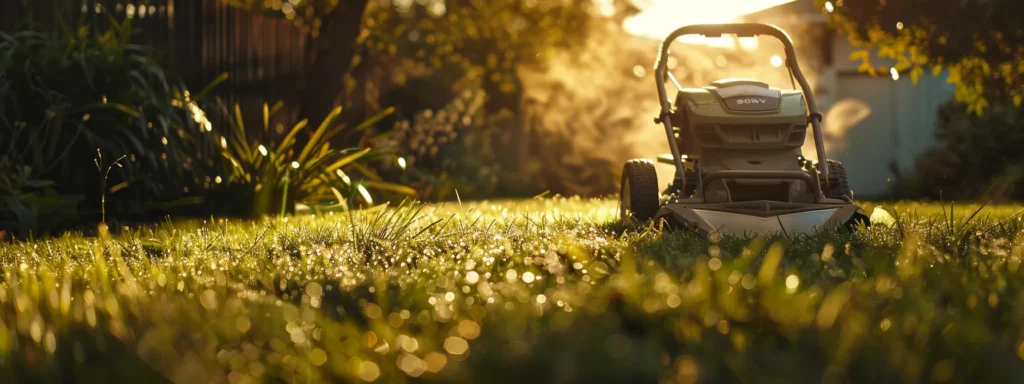
Maintaining a lawn mower is essential for ensuring optimal performance and long-lasting results in garden care. This involves keeping mower blades sharp for clean cuts, properly cleaning and storing the mower to prevent wear, performing regular fuel and oil checks for efficient operation, and adhering to essential safety guidelines to protect users. Each of these practices significantly contributes to effective lawn care and enhances the overall health of the garden.
Keeping Mower Blades Sharp
Keeps mower blades sharp is essential for maintaining a healthy lawn. Sharp blades create clean cuts, which reduce stress on grass and promote quicker recovery after mowing. Homeowners should regularly check blade sharpness and sharpen them at least once a season, or more frequently if mowing often. Keeping blades in optimal condition improves lawn health and enhances the overall appearance of the garden:
- Check blade sharpness regularly.
- Sharpen blades at least once per season.
- Ensure clean cuts for reduced grass stress.
Cleaning and Storing Your Mower Properly
Cleaning and storing a lawn mower properly plays a crucial role in maintaining optimal performance and extending its lifespan. After each use, it is essential to remove grass clippings, dirt, and debris from the mower’s blades and deck, ensuring efficient operation and preventing rust. Additionally, storing the mower in a dry, sheltered area, such as a garage or shed, protects it from the elements and maintains its functionality, allowing it to perform effectively during the critical mowing season.
Performing Regular Fuel and Oil Checks
Performing regular fuel and oil checks is vital for optimal lawn mower performance and the overall health of a garden. By ensuring that the fuel is clean and of good quality, mowers run more efficiently, preventing issues that could disrupt mowing schedules. Regularly checking and changing the oil also helps maintain engine health, ensuring the mower operates smoothly and lasts longer, thereby contributing to effective lawn care and a thriving garden.
Following Essential Safety Guidelines
Following essential safety guidelines is crucial for effective lawn mower maintenance and overall garden care. Homeowners should always wear appropriate protective gear, such as goggles and sturdy footwear, to shield themselves from debris and injuries while mowing. Additionally, keeping children and pets at a safe distance during operation helps to prevent accidents, ensuring a safer mowing experience for everyone involved.
| Safety Guidelines | Best Practices |
|---|---|
| Wear Protective Gear | Use goggles and sturdy shoes to protect against debris. |
| Keep Distance from Operating Mower | Ensure children and pets are away from the mowing area. |
| Read the User Manual | Familiarize with mower features and operational instructions. |
| Status Check Before Use | Inspect mower for damages or blockages before mowing. |
Conclusion
Essential lawn mowing practices play a crucial role in maintaining a thriving garden by promoting grass health, enhancing soil development, and preventing weeds. Regularly adjusting mowing heights and implementing efficient techniques contribute to a resilient lawn that stands up against pests and environmental stressors. Homeowners should prioritize proper mower maintenance and adhere to a consistent mowing schedule to maximize the benefits of their efforts. By following these best practices, gardeners can achieve a vibrant and healthy landscape that boosts the curb appeal and value of their property.


